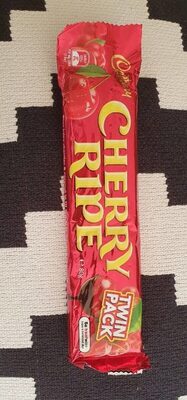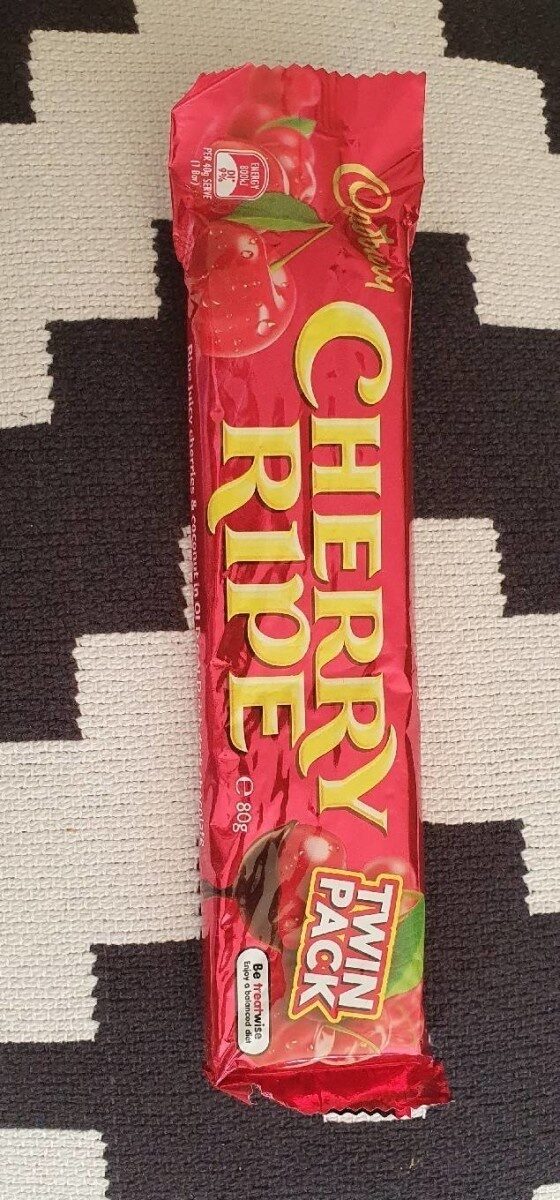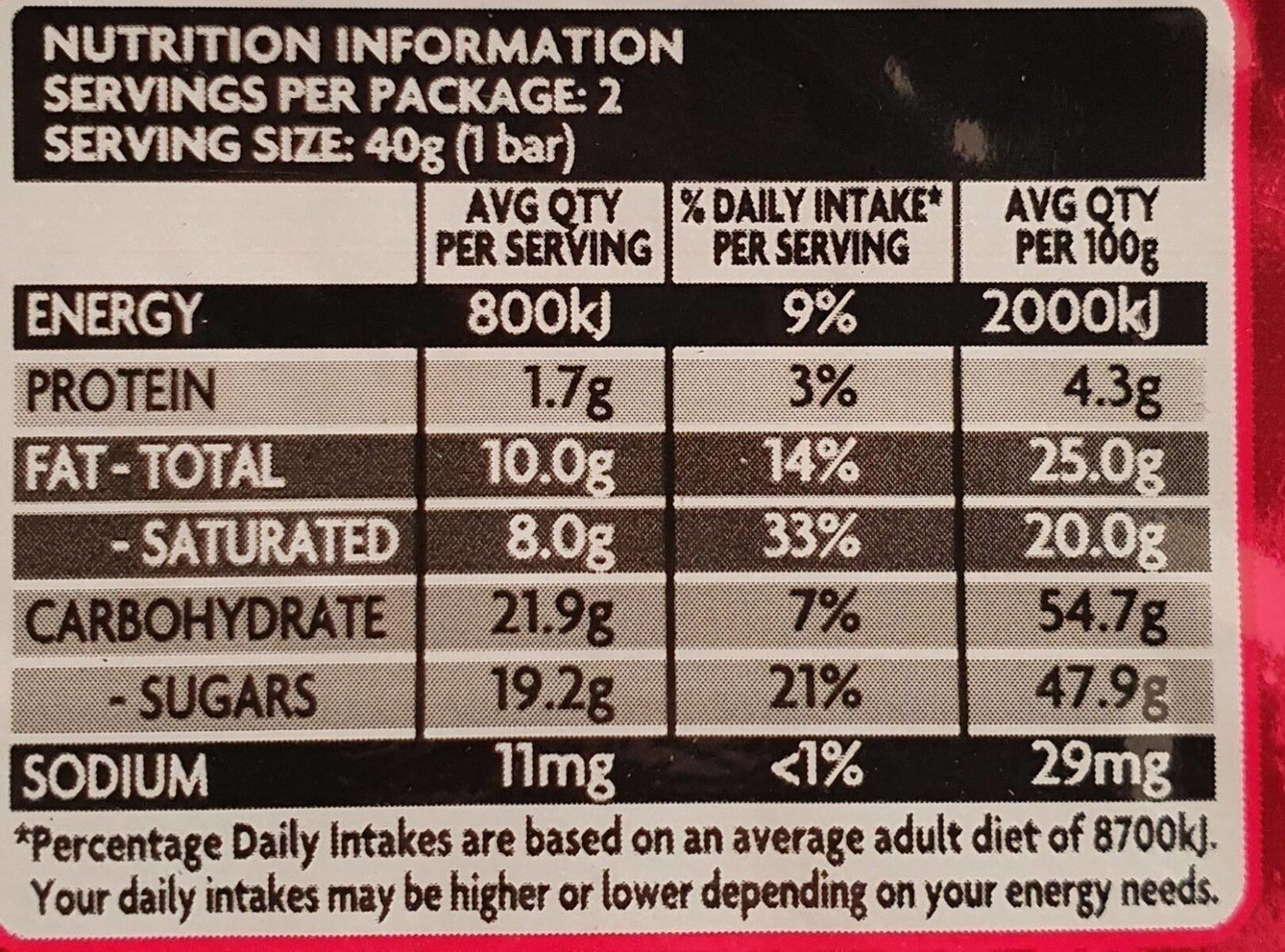Cherry Ripe - Cadbury - 80g
This product page is not complete. You can help to complete it by editing it and adding more data from the photos we have, or by taking more photos using the app for Android or iPhone/iPad. Thank you!
×
Barcode: 9300617411154 (EAN / EAN-13)
Quantity: 80g
Packaging: Plastic
Brands: Cadbury
Categories: Snacks, Sweet snacks, Cocoa and its products, Chocolates
Manufacturing or processing places: Australia
Stores: Coles, Woolworths, OTR
Countries where sold: Australia
Matching with your preferences
Environment
Packaging
Transportation
Report a problem
Data sources
Product added on by foodorigins
Last edit of product page on by kiliweb.
Product page also edited by inf, packbot, roboto-app, tbound2, yuka.sY2b0xO6T85zoF3NwEKvlkl1VIDj-mjONy75uW7W2P6nMY32e85CvYfzGKs, yuka.sY2b0xO6T85zoF3NwEKvllAZT-v6-zbKLhHkhH25m8m2FY3EMcAj_IP7Kag.
If the data is incomplete or incorrect, you can complete or correct it by editing this page.









